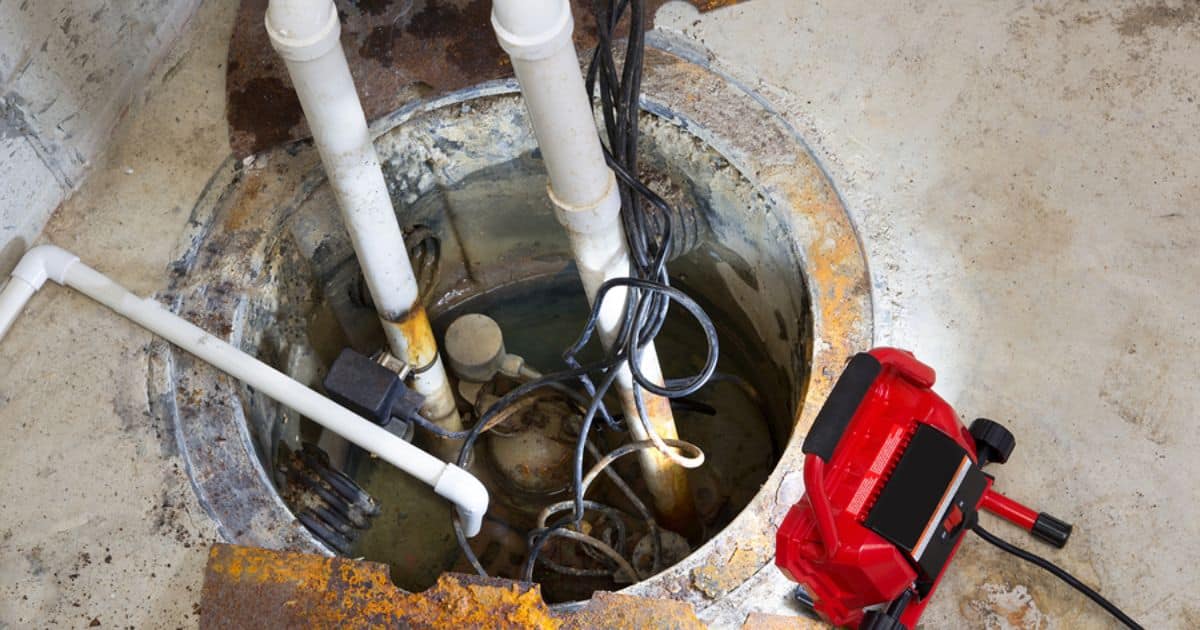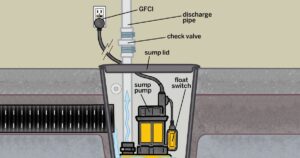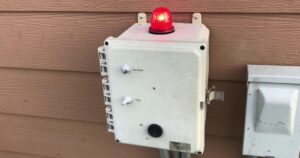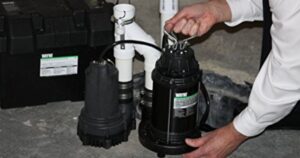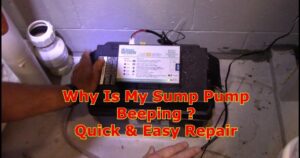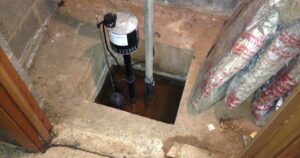While the idea of cleaning a sump pump pit may seem daunting, it is an essential task that ensures the proper functioning of your sump pump system. This article will guide you through the necessary steps to effectively clean your sump pump pit, providing you with detailed instructions, maintenance tips, and common problem-solving solutions. By following these practical guidelines, you will be able to maintain a clean and efficient sump pump pit, keeping your property safe from potential water damage.
Necessary Tools for Cleaning
What tools are necessary for cleaning a sump pump pit? Cleaning a sump pump pit is an important maintenance task that ensures the smooth operation of your sump pump and prevents potential water damage in your basement. To clean the sump pump pit effectively, you will need a few essential tools. Firstly, a sturdy pair of gloves is necessary to protect your hands from debris and potential contaminants in the pit.
Abucket or a shop vacuum will be useful for removing any standing water or sludge that has accumulated in the pit. A scrub brush or a wire brush can help you scrub away any dirt or residue on the pit walls. Finally, a flashlight will come in handy to inspect the pit thoroughly and identify any potential issues. By having these tools readily available, you can ensure a thorough and efficient cleaning of your sump pump pit.
Step-by-Step Guide to Cleaning
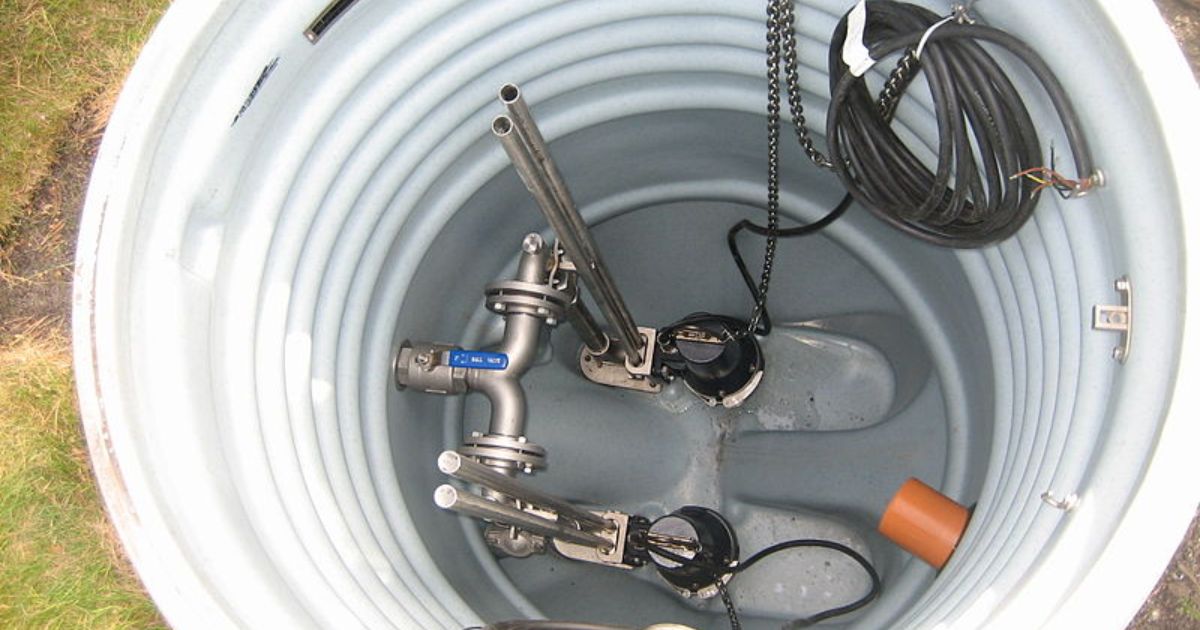
To begin cleaning a sump pump pit, start by removing any debris or standing water. Use a small shovel or scoop to carefully scoop out any solid debris that may have accumulated in the pit. Be sure to wear gloves and protective eyewear to avoid any potential hazards. Once the debris is removed, use a wet/dry vacuum or a sponge to remove any remaining water from the pit.
Clean the pit walls and bottom using a mixture of warm water and mild detergent. Scrub the surfaces gently with a brush to remove any dirt or grime. Rinse the pit thoroughly with clean water to ensure all detergent residue is removed. Finally, allow the pit to dry completely before reinstalling the sump pump.
Frequency of Cleaning
Cleaning the sump pump pit should be done regularly to ensure optimal performance and prevent any potential issues. The frequency of cleaning will depend on various factors, such as the amount of water that enters the pit and the presence of debris. As a general guideline, it is recommended to clean the pit at least once a year.
However, in areas with heavy rainfall or high water table, more frequent cleaning may be necessary. Regular inspections should also be conducted to check for any signs of clogging or damage. If you notice any unusual sounds or odors coming from the pump, or if the pump is running more frequently than usual, it may be a sign that the pit needs to be cleaned sooner. By maintaining a regular cleaning schedule, you can ensure that your sump pump operates efficiently and effectively, providing you with the protection you need against basement flooding.
Signs to Call in Professional Help
- If you notice persistent issues with your sump pump or are unsure how to address them, it may be time to call in professional help. While some minor issues can be resolved with basic troubleshooting, there are certain signs that indicate the need for professional assistance. Here are a few signs to watch out for:
- Excessive noise: If your sump pump is making unusual or loud noises, it could indicate a problem with the motor or impeller.
- Frequent cycling: If your sump pump is turning on and off more often than usual, it may be a sign of a malfunctioning float switch or a problem with the discharge pipe.
- Water leakage: If you notice water pooling around your sump pump or in the pit, it may be a sign of a faulty seal or a crack in the pump housing.
When these signs occur, it is best to contact a professional sump pump technician who can accurately diagnose and resolve the issue, ensuring your sump pump functions properly and protects your basement from flooding. Sump pump smell can be a sign of underlying issues, and it is important to have a professional assess the situation to determine if the smell is toxic.
Different Types of Sump Pumps
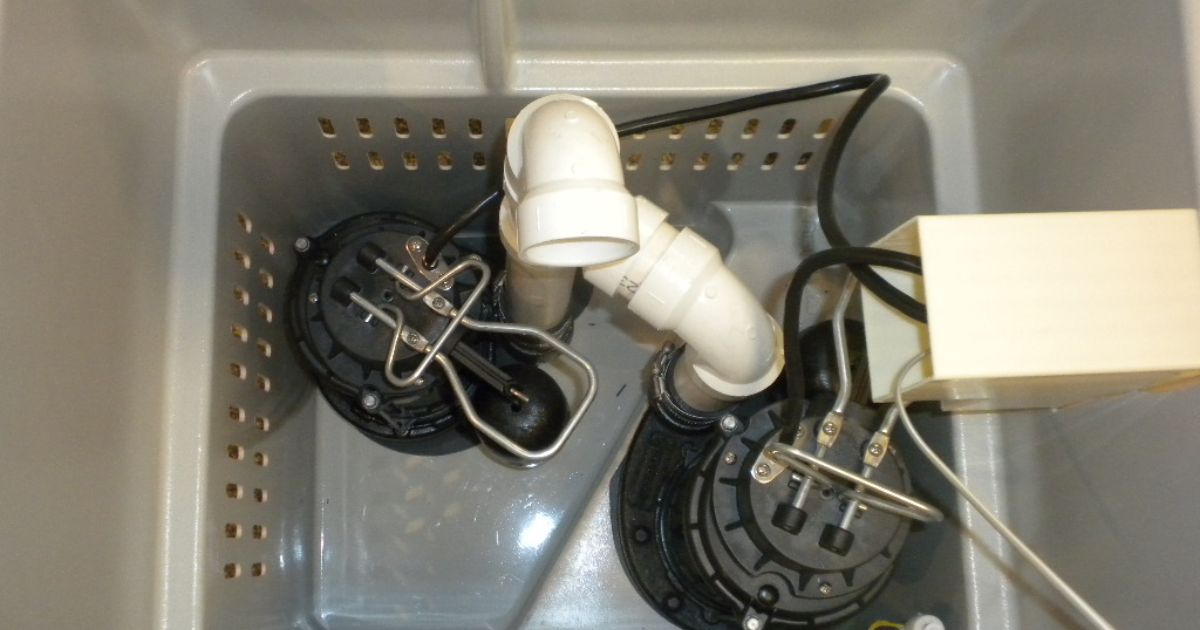
After identifying the signs that may require professional help, it is important to understand the different types of sump pumps available for your basement. There are several options to consider when choosing the right sump pump for your needs. The most common types include pedestal sump pumps, submersible sump pumps, and battery backup sump pumps.
Pedestal sump pumps are installed above the sump pit and are known for their durability and long lifespan. They are also easier to access for maintenance and repairs.
Submersible sump pumps, on the other hand, are installed inside the sump pit. They are more discreet and quieter compared to pedestal pumps. They are also more efficient at removing water and tend to last longer.
Battery backup sump pumps are a great addition to any sump pump system. They provide protection during power outages and can help prevent basement flooding in emergency situations.
Understanding the different types of sump pumps will allow you to make an informed decision and choose the one that best suits your needs and budget.
Using Vinegar as a Cleaning Agent
Vinegar is an effective cleaning agent for maintaining the sump pump pit. It is a natural, non-toxic solution that can help remove dirt, grime, and mineral deposits that can accumulate in the pit over time. Here are some ways you can use vinegar to clean your sump pump pit:
- Mix equal parts vinegar and water and pour it into the pit. Let it sit for about 15-20 minutes to allow the vinegar to break down any buildup.
- Use a scrub brush or a sponge to scrub the sides of the pit, paying extra attention to any areas with stubborn stains or debris.
- After scrubbing, rinse the pit thoroughly with clean water to remove any remaining vinegar solution.
Using vinegar regularly as a cleaning agent can help prevent clogs and maintain the efficiency of your sump pump. Remember to always follow proper safety guidelines and consult your manufacturer’s instructions before cleaning your sump pump pit.
Maintenance Tips for Sump Pumps
To ensure the optimal performance and longevity of your sump pump, it is essential to follow proper maintenance tips. Regular maintenance can help prevent costly repairs and keep your sump pump functioning effectively during heavy rains or floods. Here are some practical maintenance tips to keep in mind:
- Test the pump regularly: To ensure it is working correctly, test your sump pump by pouring water into the pit. It should activate and pump the water out.
- Clean the pump and pit: Remove any debris or sediment from the sump pump and pit to prevent clogs. This can be done using a vacuum or by hand.
- Check the discharge pipe: Ensure that the discharge pipe is free from obstructions or ice buildup, as this can impede the flow of water.
- Inspect the float switch: The float switch is responsible for activating the pump. Ensure it moves freely and isn’t stuck.
- Maintain backup power: Consider installing a backup power source, such as a battery-powered backup or a generator, to ensure the pump continues to work during power outages.
Common Problems and Solutions for Sump Pumps
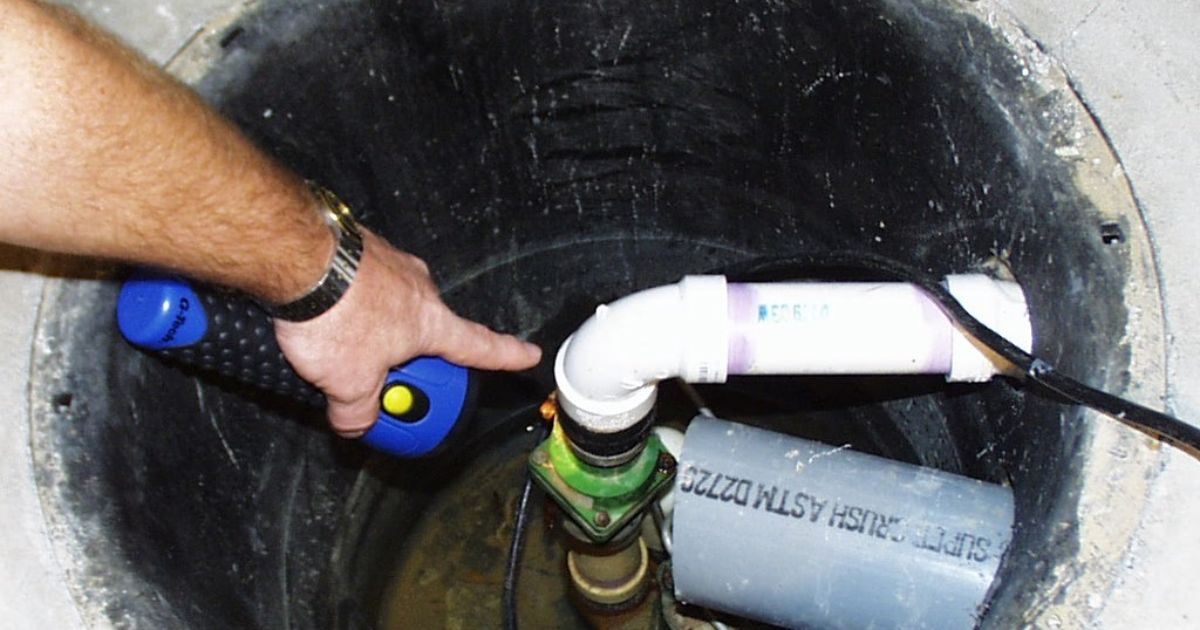
One common problem that sump pumps may encounter is a malfunctioning float switch. The float switch is responsible for activating the pump when the water level reaches a certain point. If the float switch fails to function properly, the sump pump may not turn on or may not turn off when it should, leading to potential flooding and damage. To address this issue, you can try cleaning the switch to remove any debris or buildup that might be interfering with its operation. If cleaning doesn’t solve the problem, you may need to replace the float switch altogether.
- Check for debris: Inspect the float switch for any debris or obstructions that may be preventing it from moving freely.
- Test the switch: Use a multimeter tool to check if the float switch is providing a continuous electrical connection when in the proper position.
- Replace the switch: If cleaning and testing the switch doesn’t resolve the issue, it may be necessary to replace the float switch with a new one.
Remember to always consult the manufacturer’s instructions or seek professional assistance when troubleshooting or replacing sump pump components.
Frequently Asked Questions
Can I Use Bleach Instead of Vinegar as a Cleaning Agent for My Sump Pump Pit?
While vinegar is commonly recommended as a cleaning agent for sump pump pits due to its mild nature and ability to remove odors, bleach can also be used. However, it is important to dilute bleach properly and ensure proper ventilation during the cleaning process.
How Often Should I Replace the Backup Battery for My Sump Pump?
The frequency of replacing the backup battery for a sump pump depends on various factors such as the battery type, usage, and manufacturer’s recommendations. It is advisable to consult the pump’s manual or contact the manufacturer for specific guidance.
Can I Use a Regular Vacuum Cleaner to Remove Debris From the Sump Pump Pit?
Using a regular vacuum cleaner to remove debris from a sump pump pit is not recommended. It may not be powerful enough to effectively remove the debris, and there is also a risk of damaging the vacuum.
Is It Necessary to Clean the Sump Pump Pit if the Pump Is Not Frequently Used?
Regular maintenance of a sump pump pit is necessary, regardless of frequency of use. Neglecting cleaning can lead to clogs, reduced efficiency, and potential damage. It is important to keep the pit clear of debris to ensure optimal functionality.
Can I Install a Sump Pump Myself, or Do I Need to Hire a Professional?
Installing a sump pump can be a complex task that requires knowledge of plumbing and electrical systems. While it is possible to install one yourself, hiring a professional ensures proper installation and reduces the risk of potential issues.
Conclusion
In conclusion, regular maintenance and cleaning of the sump pump pit is crucial to ensure its proper functioning and prevent potential problems. By following the step-by-step guide and using vinegar as a cleaning agent, you can easily keep your sump pump pit clean and free from debris. Remember to pay attention to any signs of malfunction and seek professional help if needed. Taking care of your sump pump will help to protect your basement from flooding and maintain a reliable drainage system.
